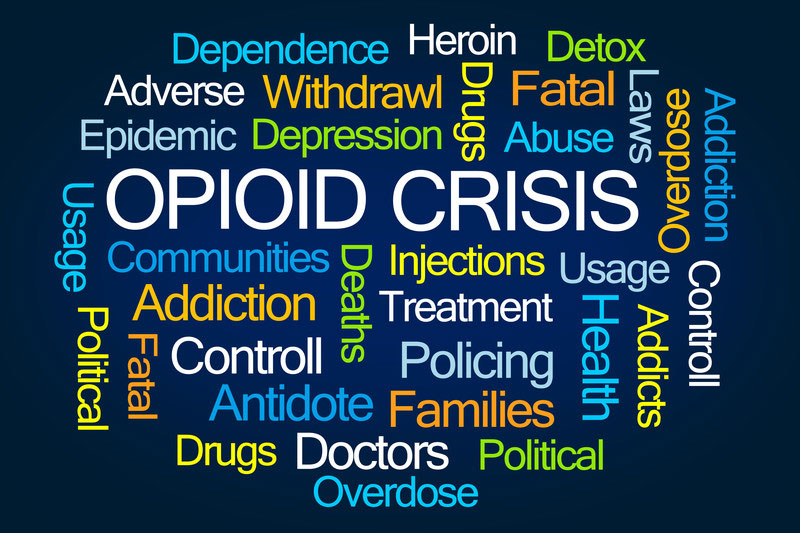The widespread adoption of electronic health records (EHRs) has helped improve clinical productivity and efficiency. Medical transcription outsourcing plays an important role in optimizing EHR use by ensuring accurate, legible and timely documentation. According to recent reports, optimizing EHR functionality can help in the battle against the opioid epidemic.

According to a CNBC report published in June, painkiller overdoses kill 116 people every day. The US President declared the opioid epidemic a public health emergency last year, and announced a proposal to tackle this national health crisis. Passed in March, the U.S. omnibus spending bill includes $4 billion to address the opioid crisis. Key federal agencies under Health and Human Services and other stakeholders across the continuum of care are working to combat the opioid crisis on many fronts, leveraging EHR technology has become an important priority in this battle. Here are the various ways EHRs can help combat the opioid crisis:
- Helps modify providers’ prescribing practices: EHR systems can be used to collect and analyze data to address opioid abuse and addiction, and to prevent overdose deaths. A recent healthcare Informatics report cites a Healthcare Informatics article, which told of how Pa.-based Geisinger’s clinical IT leaders developed a strategy to address Pennsylvania’s opioid crisis utilizing data and health IT tools to modify providers’ prescribing practices. These efforts helped the health system slash opioid prescriptions from a monthly average of 60,000 opioid prescriptions to 31,000 prescriptions per month.
- Allows viewing of patients’ medication histories at the point of care: By providing a view of patients’ medication histories at the point of care, electronic prescription of controlled substances (EPCS) can notify providers about patients who might have a drug dependency. Information such as prescribing guidelines, quantity limits, and alternative medications can be incorporated in the EPCS. Also, electronic prescriptions also go directly from the provider to the pharmacy, preventing illegitimate practices such as forging/altering prescriptions by the patient.
- Prescription Drug Monitoring Program (PDMP) data integration prevents over-prescription: Quick and easily accessible information regarding the patients’ controlled substance prescriptions in their state as well as surrounding states is necessary to ensure that opioids and other controlled substances are not prescribed inappropriately. Integrating EMRs and the state’s PDMP can prevent over-prescription of opioid medication to patients whose prescription history suggests abuse or diversion. With this integration, it will be possible to retrieve the patient-specific report directly within the EHR system in just seconds. Necessary information such as the drugs prescribed, number of prescribers, and different pharmacies a patient has used would be immediately available.Health IT News recently reported on University of North Carolina Health Care at Chapel Hill plans to integrate its EHR (Epic) with the state’s PDMP to allow better tracking of prescribing controlled substances statewide. Such alignment with the PDMP is crucial in the battle the opioid problem.
- Interoperability of EMR permits sharing of patient records among providers: The Centers for Medicare and Medicare Services (CMS) recently issued guidance aimed at promoting interoperability of electronic medical records at Medicare-participating hospitals. Interoperability makes it easier for providers to access the patient’s history and the prescribers’ history of prescribing controlled substances more seamlessly in their workflow. Under CMS’ proposed rule, incentives will be given to providers who update their EMR to allow patients to access and share their medical records with other providers and institutions. This can help physicians to better manage complex medical problems that require opioid pain medications.
- EHRs can help curb opioid use in ambulatory surgical centers (ASCs): Beckers ASC Review recently listed several ways EHRs can help ASCs restrain opioid use:
- Using EHRs to standardize order sets could help implement an effective multimodal pain management protocol.
- EHRs can prevent overprescribing as they provide real-time summaries of all medications administered during a patient’s visit and allow providers access to chart patients simultaneously.
- Using the EHR medication reconciliation section, providers can easily assess patients’ home medications and possible interactions with planned discharge medications.
- Before the surgery, EHRs can be used to collect information needed to develop the optimal pain management combinations for the patient.
- Surgical centers can use EHRs to design discharge instructions for specific procedures.
- EHRs can be used to understand opioid use related to procedures, ordering providers, and administering personnel so that steps can be taken to prevent overuse.
Further, in the ASC setting, EHRs allow anesthesiologists, prescribers and other members of the patient’s care team to communicate quantifiable values and indicators of pain more efficiently and accurately.
When it comes to opioid therapy, quality pain management transcription service is critical to ensure accurate and precise EHR documentation for medical-legal reasons as well as for evidence-based performance. As experienced medical transcription company can ensure comprehensive documentation of pain management in EHRs to support the battle against opioid overuse.


